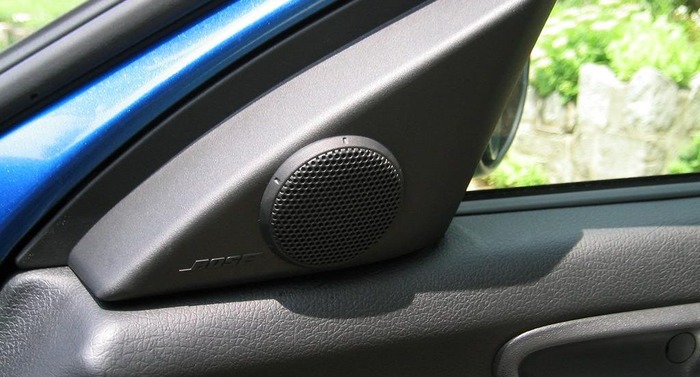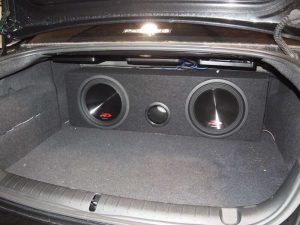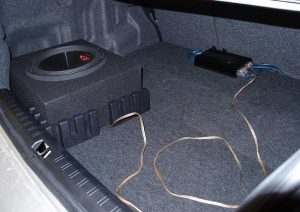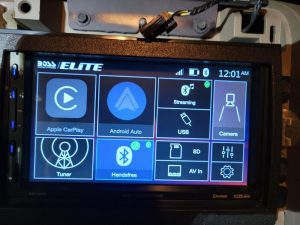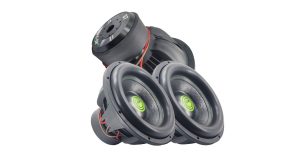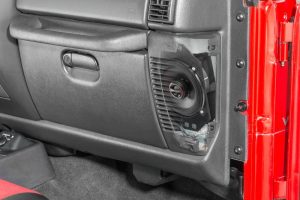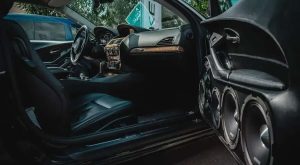Car audio systems transform your driving experience, turning mundane commutes into immersive musical journeys. Yet, many drivers notice their factory-installed speakers lack clarity, especially in vocals or high-pitched instruments. This is where tweeters shine. These small yet powerful components elevate your car stereo by delivering crisp, high-frequency sounds. In this comprehensive guide, we explore what tweeters do, their role in car audio, their benefits, and how to choose the best ones for your vehicle. Let’s dive in and uncover how tweeters can enhance your listening experience on the road.
Contents
- Understanding Tweeters: The Basics
- Tweeters vs. Woofers vs. Mid-Range Speakers
- The Role of Tweeters in Car Audio Systems
- How Tweeters Integrate with Car Stereo Systems
- Types of Tweeters for Car Audio
- Choosing the Best Tweeters for Your Car Stereo
- Installing Tweeters: Tips for Success
- Do You Really Need Tweeters?
- Optimizing Tweeter Performance: Advanced Tips
- Conclusion: Elevate Your Car Audio with Tweeters
Understanding Tweeters: The Basics
Tweeters are specialized loudspeakers designed to reproduce high-frequency sounds, typically ranging from 2,000 Hz to 20,000 Hz. Unlike woofers, which handle deep bass, or mid-range speakers that cover vocals and instruments, tweeters focus on treble. They bring out the sharp, clear notes in cymbals, flutes, violins, and high-pitched vocals. In a car stereo, tweeters ensure your music sounds detailed and vibrant, preventing it from feeling flat or muffled.
These compact speakers work by converting electrical signals into sound waves. A lightweight diaphragm, often made of silk, aluminum, or titanium, vibrates rapidly to produce high frequencies. Because high-pitched sounds have shorter wavelengths, tweeters are smaller than other speakers, making them perfect for tight spaces like car dashboards or door pillars.
In a typical car audio setup, tweeters complement other speakers to create a balanced soundstage. Without them, your stereo might miss the clarity needed to enjoy intricate musical details, leaving you with a lackluster experience. Now that we grasp their purpose, let’s examine how tweeters differ from other car audio components.
Tweeters vs. Woofers vs. Mid-Range Speakers
To appreciate tweeters’ role, it’s helpful to compare them with other speakers in your car audio system. Each component handles a specific frequency range, contributing to a cohesive sound.
- Tweeters: These focus on high frequencies (2,000 Hz to 20,000 Hz). They excel at reproducing treble, such as the chime of a triangle or the sizzle of a hi-hat. Their small size allows precise sound dispersion, enhancing clarity.
- Woofers: Built for low frequencies (20 Hz to 2,000 Hz), woofers deliver the booming bass you feel in your chest. They’re larger, with bigger cones to move more air for deep, resonant tones.
- Mid-Range Speakers: These cover the middle frequencies (200 Hz to 5,000 Hz), handling vocals, guitars, and most instruments. They bridge the gap between tweeters and woofers, ensuring a smooth transition across the audio spectrum.
Together, these speakers create a full-range sound. Tweeters add the sparkle that makes music come alive, while woofers provide the foundation and mid-range speakers fill in the details. Next, let’s explore why tweeters are essential for a high-quality car stereo.
The Role of Tweeters in Car Audio Systems
Tweeters play a pivotal role in elevating your car’s audio quality. Their ability to handle high frequencies brings several key benefits that transform your listening experience.
1. Enhanced Clarity and Detail
High frequencies carry the subtle nuances of music, like the breathiness of a singer’s voice or the delicate pluck of a guitar string. Tweeters reproduce these sounds with precision, ensuring every detail shines through. Without tweeters, your stereo might sound muddy, as woofers and mid-range speakers struggle to handle treble effectively.
2. Improved Soundstage and Imaging
A soundstage refers to the perceived spatial arrangement of instruments and vocals in your car. Tweeters create a wider, more immersive soundstage by directing high-frequency sounds accurately. When positioned correctly, they make it feel like the band is performing right in front of you, with clear separation between instruments.
3. Balanced Audio Output
A well-balanced car stereo delivers bass, mids, and treble in harmony. Tweeters prevent the audio from sounding bass-heavy or overly vocal-focused. They add the crispness needed to complement the deeper tones, resulting in a natural, enjoyable sound.
4. Immersive Listening Experience
Whether you’re listening to classical, pop, or electronic music, tweeters make the experience more engaging. They highlight the high-pitched elements that give music its energy, making long drives feel like a concert on wheels.
Given these advantages, it’s clear why tweeters are a must-have for any serious car audio enthusiast. But how do they work within the broader stereo system? Let’s take a closer look at their integration.
How Tweeters Integrate with Car Stereo Systems
Tweeters don’t work alone—they’re part of a carefully designed audio system. Most car stereos use crossovers to ensure each speaker receives the right frequencies. Crossovers are electronic components that filter audio signals, sending high frequencies to tweeters, mids to mid-range speakers, and bass to woofers. This prevents tweeters from receiving low-frequency signals, which could distort or damage them.
In component speaker systems, tweeters are separate from woofers and come with dedicated crossovers for optimal performance. Coaxial speakers, on the other hand, combine tweeters and woofers in a single unit, with built-in crossovers for easier installation. Both setups benefit from tweeters’ ability to handle treble, but component systems offer greater flexibility in placement and sound customization.
Amplifiers also play a role. They boost the audio signal, giving tweeters the power needed to produce clear, distortion-free sound. For the best results, pair tweeters with a high-quality amplifier and head unit to ensure clean signal delivery.
Now that we understand their integration, let’s consider the types of tweeters available and how they impact sound quality.
Types of Tweeters for Car Audio
Not all tweeters are created equal. Different designs and materials affect their sound characteristics, durability, and cost. Here are the most common types you’ll encounter:
1. Dome Tweeters
Dome tweeters, named for their dome-shaped diaphragm, are the most popular choice for car audio. They come in various materials:
- Silk Dome Tweeters: Known for their warm, smooth sound, silk tweeters are ideal for listeners who prefer a less aggressive treble. They’re great for jazz, classical, or pop music.
- Metal Dome Tweeters: Made of aluminum or titanium, these produce bright, detailed highs. They suit rock or electronic music but can sound harsh if not tuned properly.
- Polyester Dome Tweeters: These offer a balance of warmth and clarity at a lower cost, making them a budget-friendly option.
Dome tweeters provide excellent sound dispersion, ensuring consistent audio across the car’s interior.
2. Ribbon Tweeters
Ribbonმოდ. Ribbon tweeters use a thin metal ribbon suspended between magnets to produce sound. They deliver smooth, detailed highs with minimal distortion, making them a premium choice for audiophiles. However, they’re more expensive and less common in car audio due to their delicate construction.
3. Horn Tweeters
Horn tweeters use a horn-shaped waveguide to direct sound, offering high efficiency and focused dispersion. They’re loud and clear, making them suitable for large vehicles or high-volume systems. However, their directional nature requires precise placement to avoid harshness.
4. Piezoelectric Tweeters
These tweeters use piezoelectric crystals to generate sound, eliminating the need for a crossover. They’re durable and cost-effective but lack the finesse of dome or ribbon tweeters, often sounding less refined.
Each type suits different preferences and budgets. For most drivers, dome tweeters strike the best balance of quality and affordability. Let’s now explore how to choose the right tweeters for your car.
Choosing the Best Tweeters for Your Car Stereo
Selecting tweeters involves balancing sound quality, budget, and installation needs. Here are key factors to consider:
1. Sound Preference
Think about the music you love. If you enjoy detailed, bright highs, metal dome tweeters might be your pick. For a warmer, smoother sound, opt for silk domes. Test different tweeters at an audio shop to find your ideal match.
2. Power Handling
Check the tweeter’s power rating (measured in watts RMS) to ensure it matches your amplifier or head unit. Overpowered tweeters can distort or blow out, while underpowered ones may sound weak.
3. Impedance
Most car tweeters have a 4-ohm impedance, compatible with standard car stereos. Ensure your tweeters’ impedance aligns with your system to avoid volume imbalances.
4. Sensitivity
Sensitivity measures how efficiently a tweeter converts power into sound (in decibels). Higher sensitivity (e.g., 90 dB or above) means louder output with less power, ideal for low-powered systems.
5. Installation Compatibility
Consider your car’s mounting options. Tweeters often fit in dashboards, A-pillars, or door panels. Component tweeters offer flexible placement, while coaxial tweeters are easier to install. Check your vehicle’s speaker size and wiring setup.
6. Budget
Quality tweeters range from $20 to over $200 per pair. Brands like Focal, Alpine, and NVX offer excellent options across price points. Invest in the best you can afford for lasting performance.
By weighing these factors, you’ll find tweeters that enhance your car’s audio without breaking the bank. Next, let’s discuss how to install them for optimal results.
Installing Tweeters: Tips for Success
Proper installation maximizes tweeter performance. While professional installation ensures precision, DIY enthusiasts can tackle the job with care. Follow these steps:
1. Disconnect the Battery
For safety, disconnect your car’s negative battery terminal to prevent electrical shorts during installation.
2. Choose the Mounting Location
Place tweeters at ear level, such as on the A-pillar or dashboard, for the best soundstage. Aim them toward the opposite seat’s headrest (e.g., driver-side tweeter toward passenger headrest) for balanced dispersion. Experiment with angles to minimize reflections off windows.
3. Mount the Tweeters
Use the provided mounting cups or brackets to secure tweeters. Remove door or dash panels with a screwdriver, then drill or cut as needed. Ensure a firm, vibration-free fit.
4. Wire the Tweeters
Connect tweeter wires to the crossover’s high-pass output, matching positive and negative terminals. Run wires through the door or dash, avoiding moving parts. If wiring without a crossover, add a capacitor (e.g., 4.7uF) to filter low frequencies.
5. Test and Tune
Reconnect the battery and test the tweeters at low volume. Adjust the head unit’s equalizer to balance treble with bass and mids. Use a digital signal processor (DSP) for fine-tuning if available.
Proper placement and tuning ensure tweeters deliver clear, distortion-free sound. Let’s now address whether you truly need tweeters in your car.
Do You Really Need Tweeters?
Some drivers wonder if tweeters are worth the investment, especially if their hearing range is limited (e.g., above 11,000 Hz for older adults). While full-range speakers can produce some high frequencies, they lack the precision of dedicated tweeters. Here’s why tweeters matter:
- Enhanced Detail: Tweeters reveal nuances in music that full-range speakers miss, even if you can’t hear above 15,000 Hz.
- Better Soundstage: They create a more immersive, concert-like experience.
- Complementary Role: Tweeters relieve woofers and mids from handling treble, improving overall clarity.
If you value high-quality audio, tweeters are a game-changer. For casual listeners, coaxial speakers with built-in tweeters may suffice. Test your system without tweeters to see what’s missing—most drivers notice a significant improvement after adding them.
Optimizing Tweeter Performance: Advanced Tips
To get the most from your tweeters, consider these expert techniques:
- Use a DSP: Digital signal processors allow precise control over frequency response, time alignment, and equalization, optimizing tweeter output.
- Sound Deadening: Apply sound-deadening materials to doors and panels to reduce vibrations and reflections, enhancing treble clarity.
- Experiment with Angles: Adjust tweeter angles during testing to find the sweet spot for your car’s acoustics.
- Upgrade Amplifiers: A high-quality amplifier delivers clean power, reducing distortion at high volumes.
These steps take your audio system to the next level, rivaling premium factory setups. Let’s wrap up with some final thoughts.
Conclusion: Elevate Your Car Audio with Tweeters
Tweeters are the secret to unlocking crystal-clear, high-frequency sound in your car stereo. By reproducing treble with precision, they enhance clarity, widen the soundstage, and create a balanced, immersive listening experience. Whether you choose silk dome tweeters for warmth or metal domes for brightness, the right tweeters transform your drives into musical adventures.
Ready to upgrade? Assess your budget, test different tweeters, and ensure proper installation for the best results. With tweeters, your car becomes a rolling concert hall, making every journey unforgettable. Share your favorite tweeter brands or installation tips in the comments—we’d love to hear from you!
